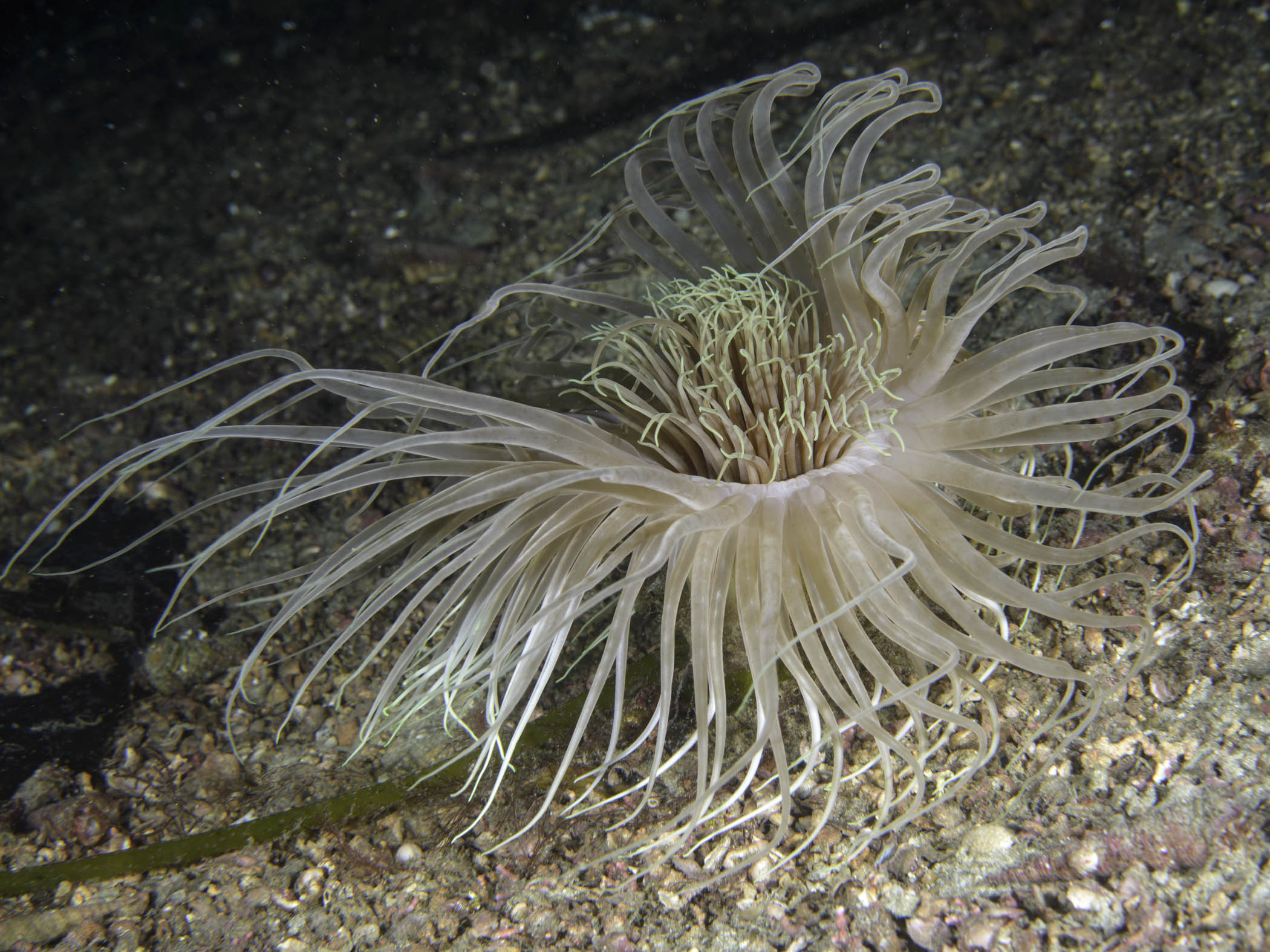| CNIDARIA : Ceriantharia : Cerianthidae | SEA ANEMONES AND HYDROIDS |
Pachycerianthus multiplicatus Carlgren, 1912
 |
| Pachycerianthus multiplicatus |
Description: This large burrowing sea anemone is similar to Synarachnactis lloydii but much larger. The length of the column and span of the tentacles is up to 300 mm and the column is much stouter than in the common Synarachnactis lloydii. The colour of the inner tentacles is pale buff or chestnut, marginal tentacles whitish with fine brown bands, or plain white. There are up to 200 very long marginal tentacles.
Habitat: Lives in a long thick tube, often 1m long, in mud or muddy sand, from 10 m to over 100 m depth.
Distribution: Recorded in Britain and Ireland from Kenmare River and Kilkieran Bay (western Ireland) and from sea-lochs on the western coast of Scotland. Elsewhere from Scandinavia.
Similar Species: A similar large cerianthid anemone whose scientific name is uncertain (referred to here as 'Dorothy'), lives amongst rocks in the Channel Islands and Brittany.
Key Identification Features:
- Tentacles in two series; marginal tentacles up to 200 in number.
- Tentacles cannot be retracted into column, but may coil spirally on disturbance.
- Lives free within a long, buried tube in soft mud.
Distribution Map from NBN: Pachycerianthus multiplicatus at National Biodiversity Network mapping facility, data for UK.
iNaturalist: Pachycerianthus multiplicatus at iNaturalist World Species Observations database.
GBIF data for Pachycerianthus multiplicatus
WoRMS: Pachycerianthus multiplicatus at World Register of Marine Species. Accepted name: Pachycerianthus multiplicatus Carlgren, 1912. AphiaID: 101013.
Classification: Biota; Animalia; Cnidaria; Anthozoa; Hexacorallia; Ceriantharia; Spirularia; Cerianthidae; Pachycerianthus
| Previous species | Next species |
| Picton, B.E. & Morrow, C.C. (2024). Pachycerianthus multiplicatus. Carlgren, 1912. [In] Encyclopedia of Marine Life of Britain and Ireland. https://www2.habitas.org.uk/marbiop-ni/speciesaccounts.php?item=D10800. Accessed on 2025-04-04 |
